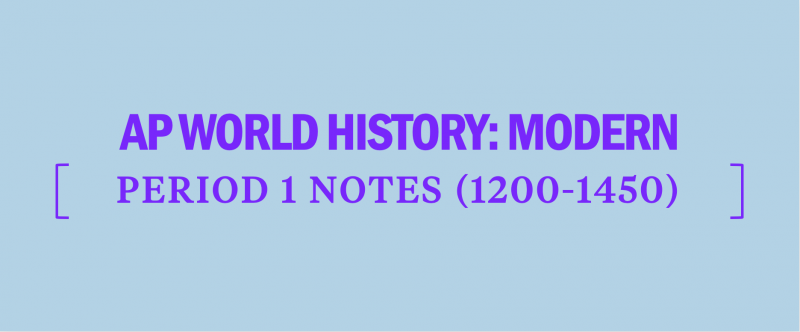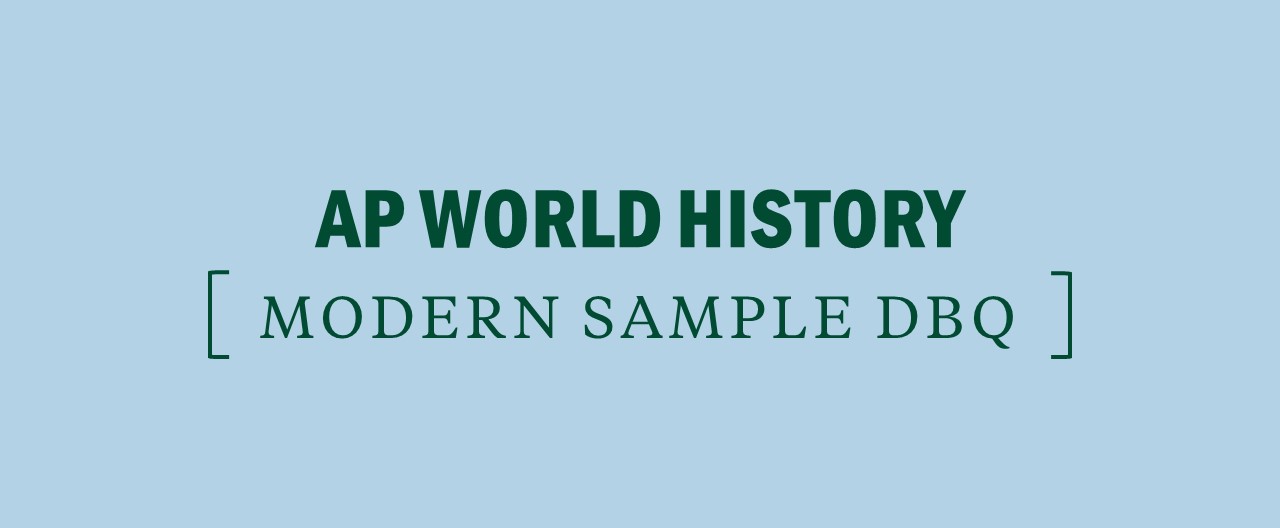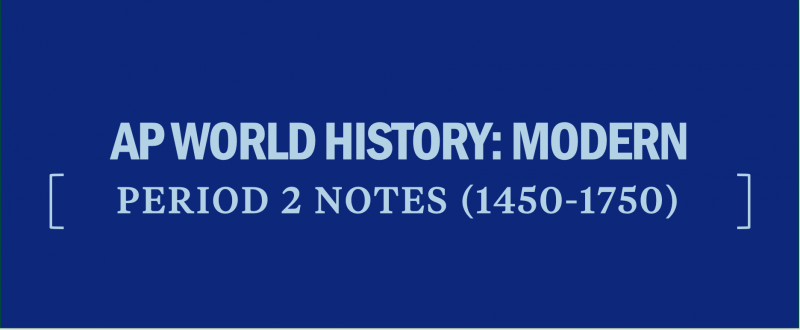AP World History: Modern—Period 1 Notes (1200-1450)
AP World History: Modern Key Takeaways — Period 1 (1200-1450)
- The spread of religion, aided by the increase in trade, often acted as a unifying social force. Throughout East Asia, the development of Neo-Confucianism solidified a cultural identity. Islam created a new cultural world known as Dar al-Islam, which transcended political and linguistic boundaries in Asia and Africa. Christianity and the Catholic Church served as unifying forces in Europe.
- Centralized empires like the Arab Caliphates and the Song Dynasty built on the successful models of the past, while decentralized areas (Western Europe and Japan) developed political organization to more effectively deal with their unique issues. The peoples of the Americas saw new, large-scale political structures develop, such as the Inca Empire in the Andes and the Mississippian culture in North America.
- The movement of people greatly altered the world politically and demographically. Traveling groups, such as the Turks and Mongols, disrupted much of Asia’s existing political structure. Turkic peoples founded the Mumluk and Delhi Sultanates. The recovery from the Mongol period introduced political structures that defined many areas for centuries to follow.
- There was tremendous growth in long-distance trade. Technological developments such as the compass improved shipbuilding technology, and gunpowder shaped the development of the world. Trade through the Silk Road, the Indian Ocean, the trans-Saharan routes, and the Mediterranean Sea led to the spread of ideas, religions, and technology. Interregional cultural exchanges, represented by early world travelers like Ibn Battuta and Marco Polo, increased due to the Mongol Conquests.
- War, disease, and famine caused massive social and political upheaval throughout Eurasia. The Black Death killed over a third of the European population, and the resulting labor shortfall increased the bargaining power of peasants, diminishing the system of feudalism. The Mongol Conquests led to a massive death toll from Korea to Russia to the Middle East, weakening many regions for centuries to come as European powers expanded outward.
- Western Europe and China saw significant economic and political recoveries. The Italian city-states grew prosperous enough to support the burgeoning Renaissance, which was partly inspired by ancient Greek works recovered from Islamic scholars. The Ming Dynasty experienced a cultural flowering that resulted in great works of art. The Ming also supported major naval expeditions by Zheng He.
AP WORLD HISTORY KEY TERMS: PERIOD 1 (1200-1450)
Remember that the AP World History exam tests you on the depth of your knowledge, not just your ability to recall facts. While we have provided brief definitions here, you will need to know these terms in even more depth for the AP exam, including how terms connect to broader historical themes and understandings.
WORLD HISTORY CULTURAL DEVELOPMENTS AND BELIEF SYSTEMS
- Neo-Confucianism: Popular during the Tang Dynasty; fused elements of Buddhism and Confucianism.
- Catholic Church: The largest of the three main branches of Christianity; centered in Rome and led by the pope; found most often in Europe, the Americas, sub-Saharan Africa, and parts of East Asia.
- Eastern Orthodox Church: The third largest of the three main branches of Christianity; originally based in the Byzantine Empire; found most often in Russia, Eastern Europe, the Balkans, and parts of Central Asia.
- Shi’a: One of the two main branches of Islam; rejects the first three Sunni caliphs and regards Ali, the fourth caliph, as Muhammad’s first true successor; most commonly found in Iran, but otherwise constitutes 10 to 15 percent of Muslims worldwide.
- Sunni: One of the two main branches of Islam; commonly described as orthodox and differs from Shi’a in its understanding of the Sunnah and in its acceptance of the first three caliphs; is by far the most common branch of Islam worldwide.
WORLD HISTORY: CIVILIZATIONS IN THE AMERICAS
- Chinampa: A form of Mesoamerican agriculture in which farmers cultivated crops in rectangular plots of land on lake beds; hosted corns, beans, chilis, squash, tomatoes, and more; provided up to seven harvests per year.
- Mit’a: A mandatory public service system in the Inca Empire requiring all people below the age of 50 to serve for two months out of the year; not to be confused with the mita, a forced labor system practiced by conquistadors in the former Inca Empire.



